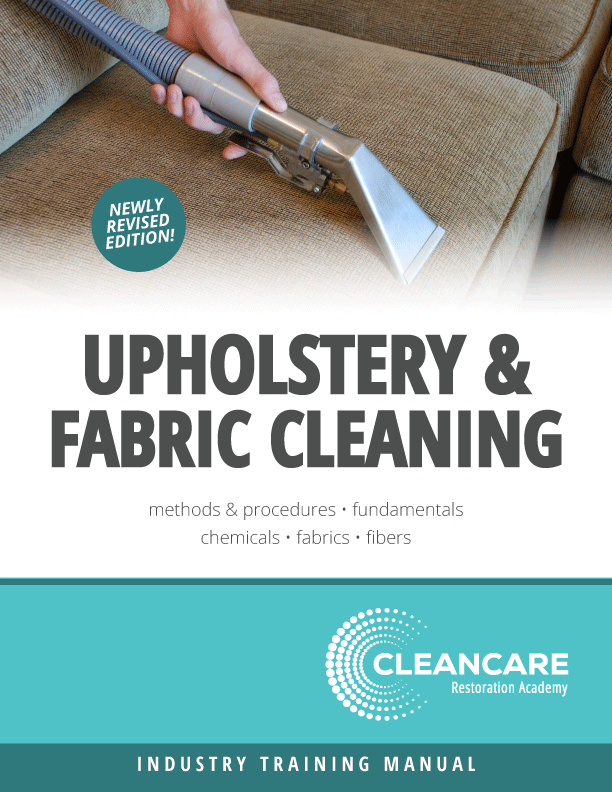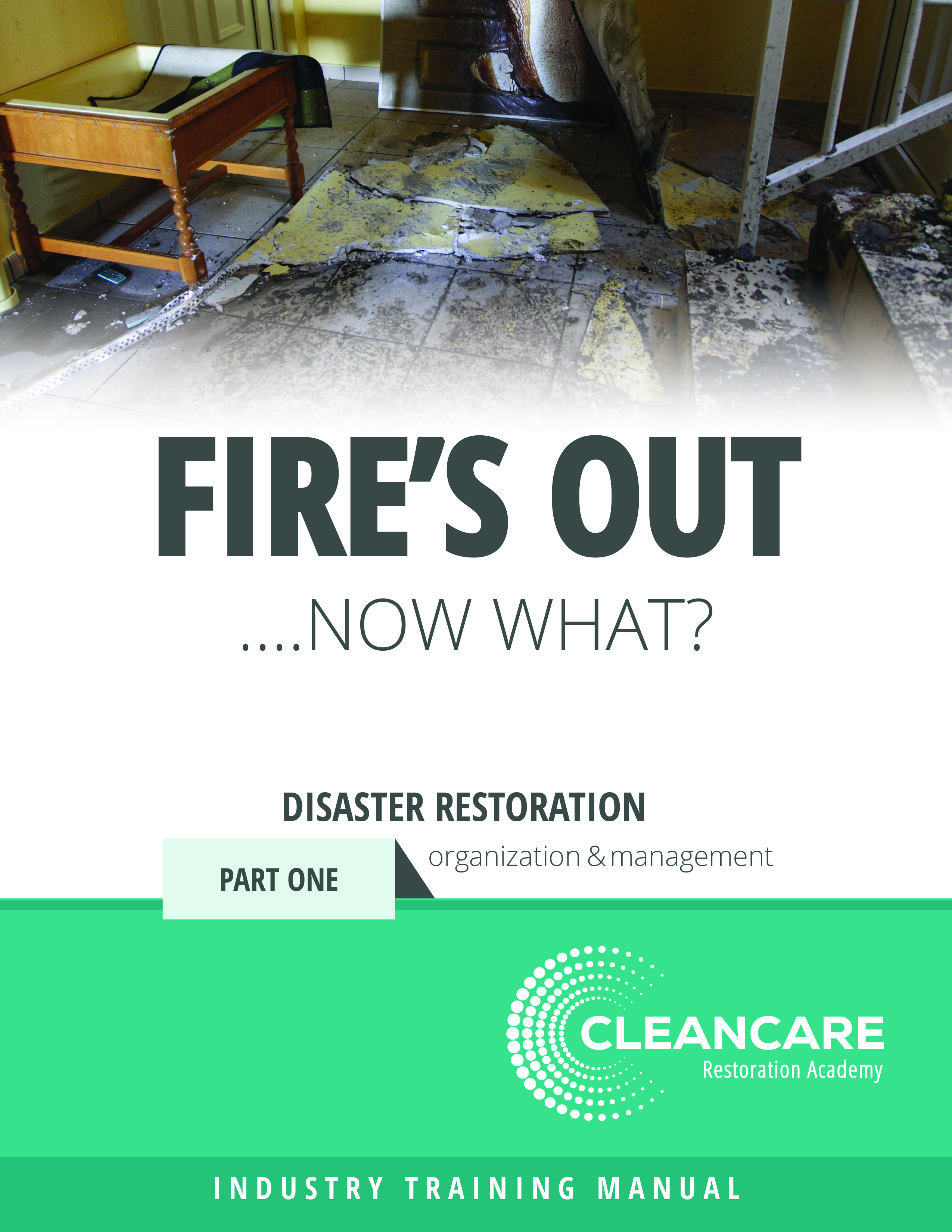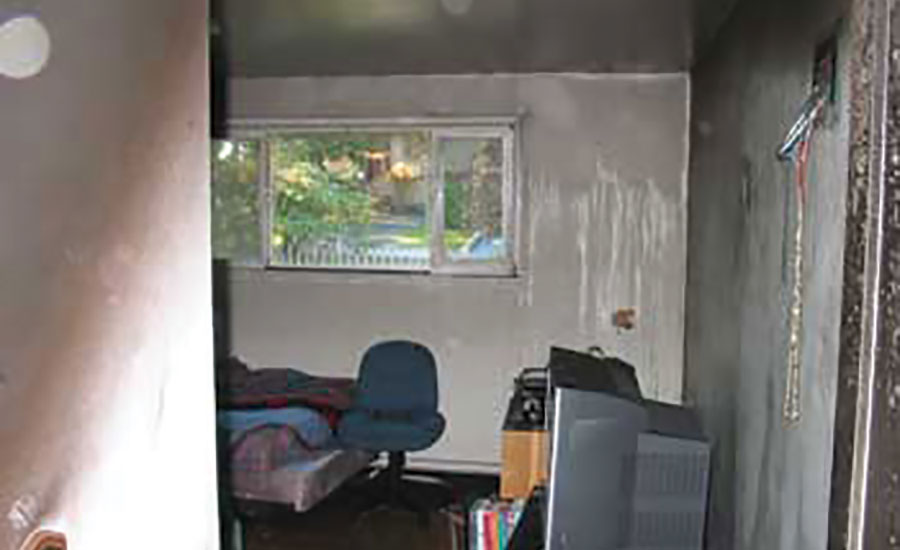Don't Skip Steps: Mastering Odor Removal during Smoke Damage Restoration
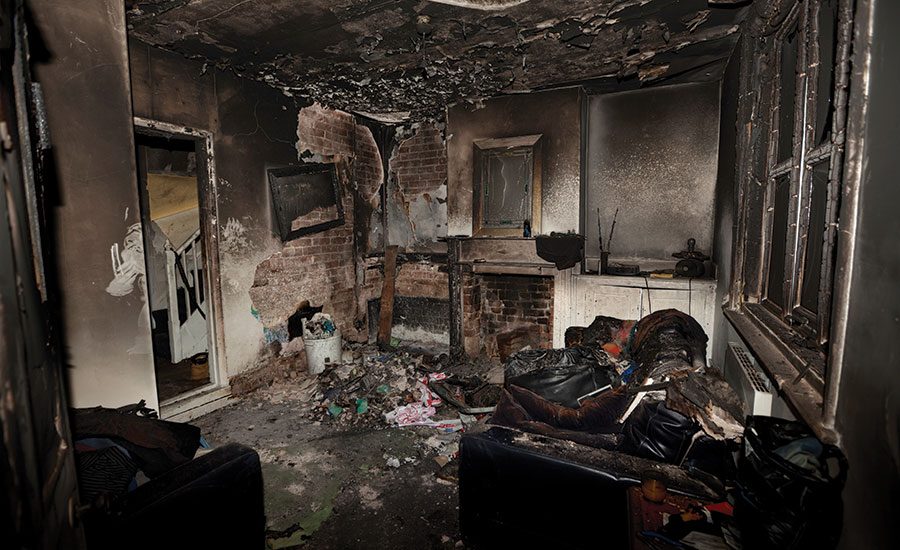
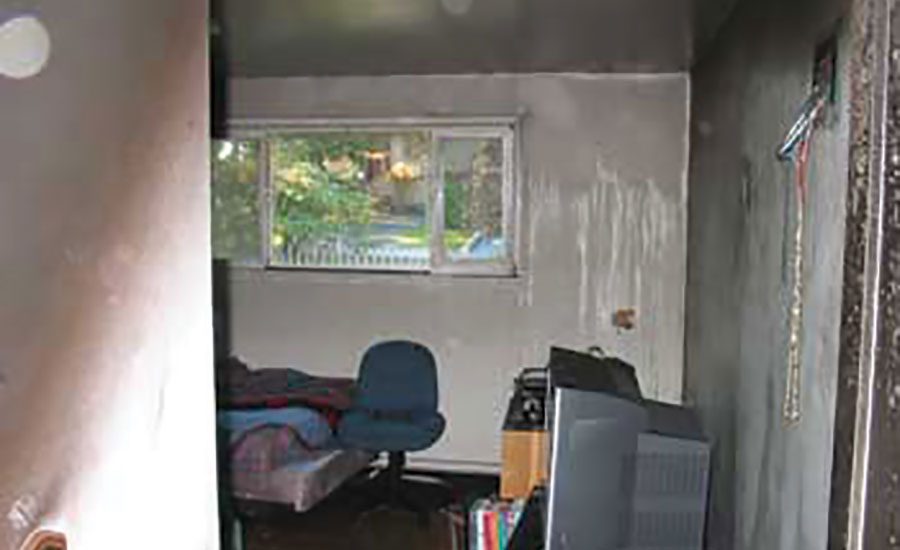
Different types of fires produce different types of damage. This is the result of a low oxygen fire, which results in wet, smoky residue.
Photos Courtesy of Allied Restoration, Inc.
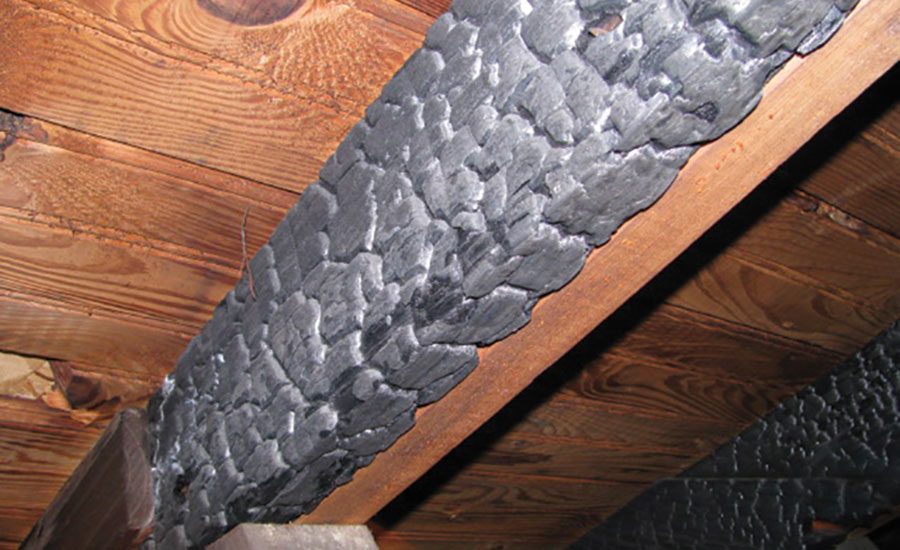
“Sistering” alongside a charred beam can help with stability.
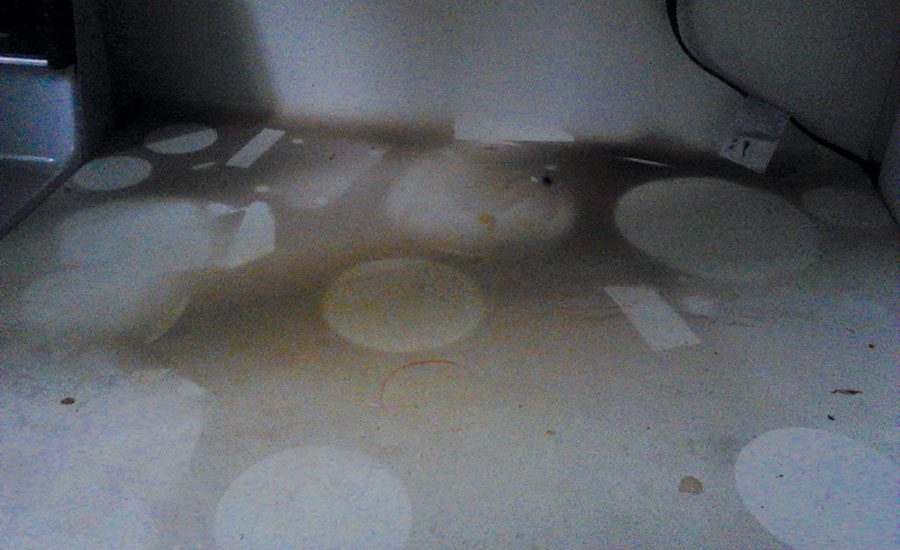

It’s important to make sure salvageable surfaces are property sealed.







Any fire restoration professional can tell you when it comes to fire damage, the fire is the easy part. There’s really only one way to get rid of most damage to building materials charred by fire: remove them.
Smoke, on the other hand, is a different story. How to deal with the odor and damage of smoke is something disagreed upon by every adjuster, contractor, contents specialist and homeowner.
Step 1: Know What You’re Dealing With
1. Identify the type of fire: Every fire has a personality and damage type of its own. High oxygen fires tend to leave behind drier smoke residue that is easier to remove than the wet, smoky residue that a low oxygen fire gives off. Additionally, if water was applied to extinguish the fire, typically the humidity in a home can rise up to 100 percent, causing the wood in the home to open its pores, absorbing more smoke and residue.
2. Safety first: Smoke is highly corrosive and can ruin anything with enough time and strength. In most cases, smoke from a home or commercial fire is not coming just from burnt wood, but other items like plastics, leathers and other chemicals. All these things will impact the way you deal with it. Due to the toxicity of the air after burning these items, consider wearing dust masks and nitrite gloves (or heavier gloves as well if there is broken glass or other building debris present). Moreover, whatever you can do to ventilate the home is typically a positive thing for the people working inside.
3.Time is of the Essence: The sooner you start the restoration process, the lower the level of damage to the property will be. Here’s what the IICRC says for a timeline of a fire:
a.“Within Minutes: Acid soot residues cause plastics to yellow; small appliances located close to the source of combustion discolor; highly porous materials (marble, alabaster) discolor permanently.
b.Within Hours: Acid residues stain grout in bathrooms; fiberglass bath fixtures may yellow; uncoated metals tarnish; counter tops may yellow; finishes on appliances, particularly refrigerators, may yellow; furniture finishes may discolor.
c.Within Days: In time, acid residues cause painted walls to yellow permanently; metal corrodes, pits and rusts; wood furniture requires refinishing; vinyl flooring requires refinishing or replacement; clothing becomes soot-stained; upholstery stains permanently.
d.Within Weeks: Restoration costs escalate tremendously. Synthetic carpet fibers may yellow or discolor permanently; silver plate is corroded permanently; glass, crystal, china may require replacement due to severe etching and pitting caused by prolonged exposure to acid soot residues.”
Understanding this, we are always prepared to begin cleanup immediately upon being called out to a new smoke damaged property.
Step 2: The Removal Process
How you clean is as important as how fast you clean. There is a wrong way and a right way to clean smoke damage and, if done incorrectly, a house can be tainted with unpleasant odors forever. In fact, there are documents recovered from the 1906 San Francisco fire that still to this day smell of smoke residue. If your insureds are anything like mine, they won’t go for that campfire smell forever in their homes.
How you clean is as important as how fast you clean.
1.Get rid of the source of the odor: Items deemed to be total loss or cleaned and deodorized offsite should be removed from the home as soon as possible. This step alone will mitigate a significant amount of the smoke odor.
How can you tell if something is damaged beyond repair? Here is what we look for:
- Framing is generally considered total loss if it is charred 1/4 of an inch or more. However, this will require a structural engineer to assess. Occasionally, the engineer will call for running an additional beam alongside the damaged one (sistering).
- Drywall will come clean at least 80 percent of the time. However, cleaning it isn’t normally the concern as much as if smoke residue got behind the drywall. If smoke is in the wall cavity, the only choice is to remove and replace it.
- Tile counters can be cleaned, so try. If the grout doesn’t come clean, replace it. Some restorers will try to chip out the top layer of grout and re-grout, but this can result in tile chipping and not worth the effort in our experience.
- Solid counters (granite, formica) will clean without problem, but if smoke is inside will require sealing the under-layer (step 4). Sometimes you’ll see the silhouette of where an item sat on the surface, and darker residue around it from the smoke. The longer the smoke sits, the more likely the discoloration will be permanent.
- Carpet can be cleaned from very light smoke (like in the case of first floor carpets in a second floor fire), but moderate to heavy damage will call for replacement.
- Laminate floors are floated floors with a layer of highly absorbent foam underneath. In other words, if smoke managed to get underneath the floor, your only option will be to remove the floor to remove the foam, and then replace.
- Real wood/engineered floors can almost always be sanded and refinished to clean smoke damage.
- Insulation is one item that must always be removed if there is any smoke inside, triggering other items for access.
2.Clean everything left behind: Once all non-salvageable building materials are removed, clean! While every contractor has a preference on materials and chemicals, generally speaking you will want a wet sponge for hard, porous materials and a dry sponge for hard, less porous materials.
3.Use an odor counteractant. We always guarantee our homeowners that they won’t be able to detect any form of smoke odor following the work we do in their homes. In order to prevent this, we always use both a thermal fogger and an ozone treatment, even if insurance doesn’t cover it. We had a job a few years ago where the adjuster refused to pay for ozone so we just did a thermal fogging, only to be called back a year later for smoke odor. We had to tear open and ozone (and restore out of pocket) a closet just to finish the job we’d already done. We learned the hard (i.e. expensive) way not to cut corners when it comes to smoke cleanup.
4.Seal salvageable surfaces that are scorched but not being removed, like framing. Between thermal fogging and ozone treatment, we seal all smoke damaged framing that is not being removed. This is even more important in areas with warm summers because the wood will actually expand in the heat causing the pores to open and smoke odor to enter back in the home. We see failure to seal remaining framing in a lot of homes repaired by non-restoration contractors.
At Allied Restoration, we have trained our staff to provide a raving fan experience to every customer, and this impacts everything we do from customer service to smoke damage. By dealing with the damage with precision, we make sure our customer understands their value to us. That’s really at the core of our industry, right?
Getting rid of the sight of smoke damage is a fairly easy thing to do. You can clean it, paint over it or remove the items. Odor on the other hand is invisible and even more bothersome and must be dealt with scientifically. How you do this will make all the difference of whether or not you get called back the next time they have a challenge.
Looking for a reprint of this article?
From high-res PDFs to custom plaques, order your copy today!







